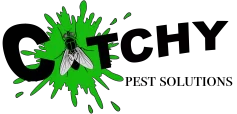5 Myths about termites
Termites are one of the most important pests to humans. Yet, many people know little about these creatures. Even worse than knowing nothing is to be misinformed. We are here to debunk 5 common myths about termites.
Eastern Subterranean Termites (the only species to affect this area) do not create saw dust because they physically eat the wood. They consume the cellulose in the wood which gives them energy. The part of the wood that the termites don’t use for energy is excreted and used to build tunnels and other parts of the colony’s structure. So, sawdust on the ground is not a sign of termites. Other pests do create saw dust though as they destroy wood. Carpenter ants, powder post beetles, and Carpenter bees, for example, all create saw dust.
Termites more closely relate to cockroaches and praying mantises than to ants. They are part of the order Dictyoptera. However, they are similar to ants in a couple ways. They both live in colony structures, with workers, soldiers, a queen, and other reproductive members. Ants and Termites also similarly search for food. Just as if you left a piece of bread on the counter ants would eventually find it, if you leave a piece of wood in the yard termites will eventually find it!
One reason termites are so difficult to control is because of their ability to build ‘tunnels’. Tunnels are made of dirt and termite droppings. These tunnels serve the termites multiple purposes. They keep them moist, protect them from predators, and give them the ability to find hard to reach wood. They can range from a centimeter to a couple of inches thick and are the termite’s highways to their food. So, if your house is on a concrete slab, the termites can just build a tunnel over the concrete and through the cracks to reach the wood!
If your house has been treated for termites, depending on the type of treatment, it may be protected from termites for as little as one year or as many as 20. Chemicals naturally decompose over time, therefore we always recommend ‘booster treatments’ every 5 years. One of the longest lasting and most effective chemicals used in history is Chlordane. If you home has been treated with chlordane, it may be termite free for many years! However, Chlordane is so strong it was banned form usage in 1988 because of multiple environmental and health reasons. Termiticides used today are much safer, but do not last as long.
Termites can eat a multitude of cellulose materials. Termites have been known to eat paper, cardboard, foam insulation, drywall, and even some kinds of plastic! However, there remain many things termites can’t eat. They cannot eat through concrete, asphalt, or any animal-based substances. Often, termites build tunnels through the smallest cracks in concrete, giving the allusion of consumption. Termites also shy away from plywood, because of all the glue holding the wood together.




Termite Control in Asheville, NC

In Asheville, North Carolina, termites play a significant role in the local ecosystem, albeit one that often goes unnoticed until they become a threat to human structures. Asheville’s temperate climate, with its warm and humid conditions, provides an ideal environment for termites to thrive. Among the various termite species present, subterranean termites are particularly common in the region. These termites are known for their subterranean nests and intricate tunneling systems, which can pose a risk to wooden structures. Homeowners in Asheville must remain vigilant about termite prevention and early detection to safeguard their properties. Additionally, the local pest control industry is actively engaged in educating residents about the signs of termite infestations and implementing effective measures to mitigate potential damage.
